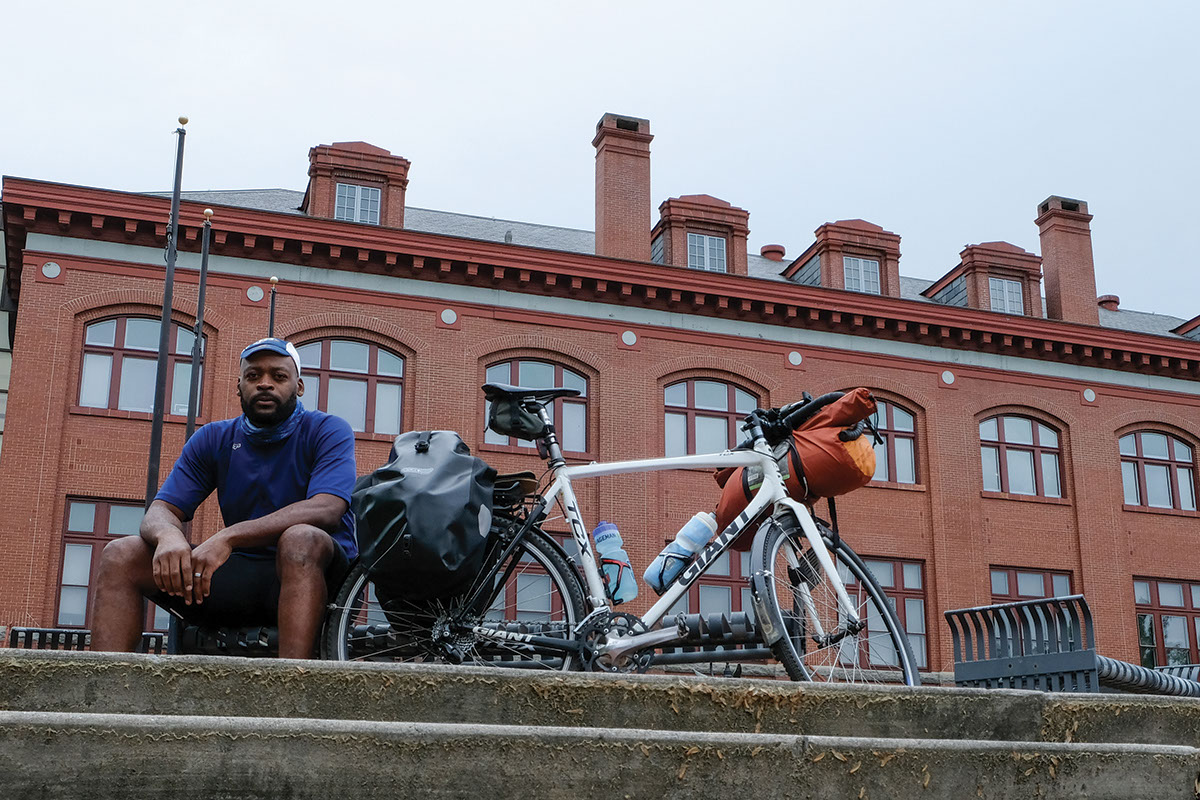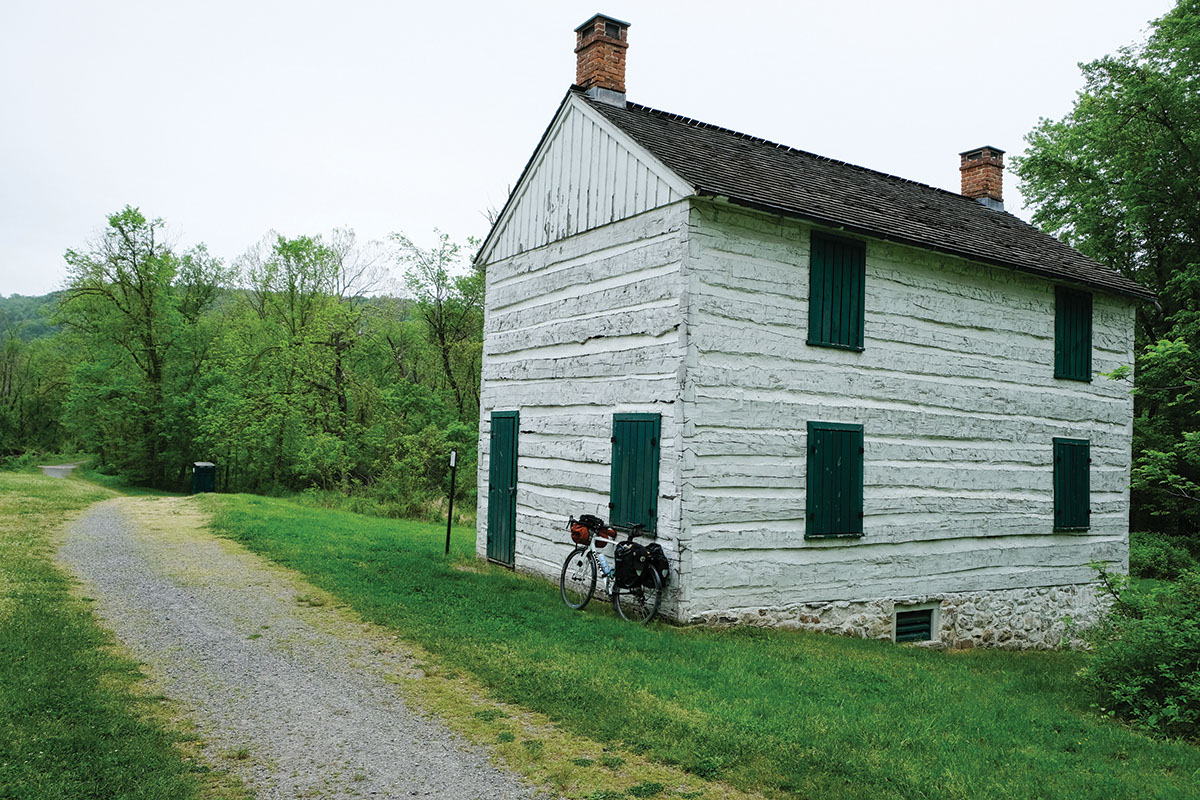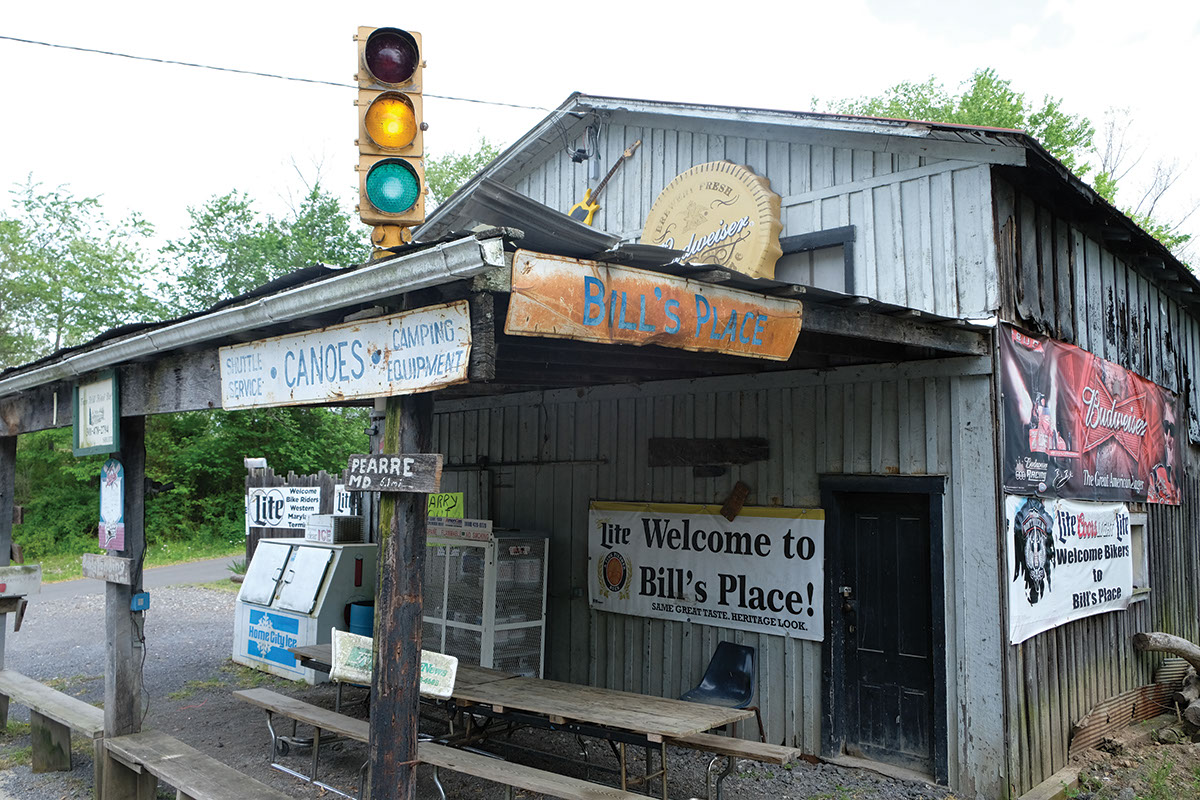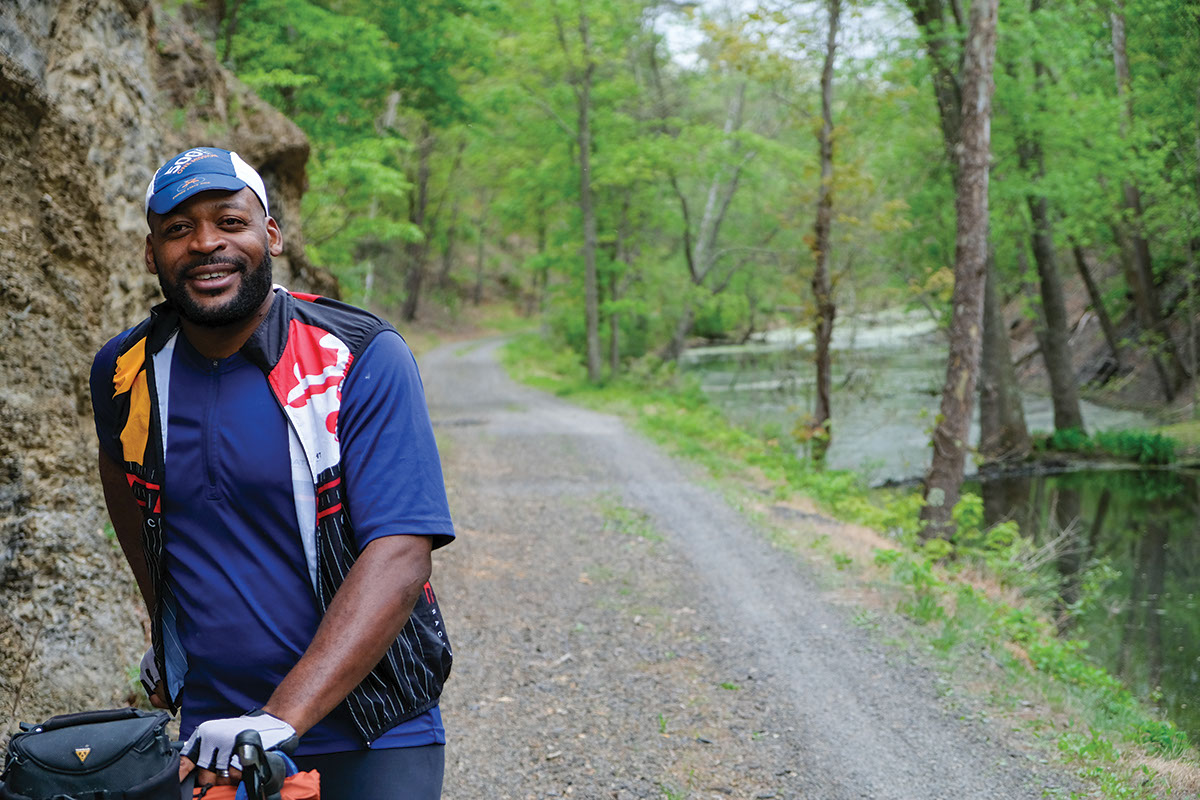Take Me Home Country Roads
This article first appeared in the March 2022 issue of Adventure Cyclist magazine.
Every tour has those moments when all that could be said has been spoken, the laughs have been exhausted, the sights are redundant, and everyone settles into their own rhythm, their own thoughts. In this moment, we touch solitude in the midst of company and we permit ourselves to do what bike rides are great for — processing. It was at this time that I began to contemplate the irony of my current reality. Clad in spandex, I was riding a bicycle loaded with gear to allow me to sleep in the “bush,” as we call it back home where I’m from.
You see, as is typical with many immigrants from Africa to this country, the goal quite simply is: overachieve the American dream! The road to that is also almost always prescribed before setting foot on American soil: get an education, become a prestigious professional (preferably one of the Big Three, a doctor, a lawyer, or an engineer), and earn a six-figure income. This makes life very difficult and confusing for someone who falls in love with a life in the outdoors and is forced to contemplate what making a living in the outdoor industry would look like. This usually involves disappointing people, accepting the cost, and embracing the many blessings (and curses) that come from answering the call of the wild. This is further compounded by the shortage of minorities, especially immigrants, in the outdoors.
According to the American Community Survey, in 2016 there were approximately 348,000 Nigerian immigrants living in the U.S., making it the top birthplace among African immigrants. Also, 60 percent of Nigerian immigrants have at least a bachelor’s degree. I happen to fall into both those groups (I have a BS in nuclear medical technology and an MBA). Today, I consider myself an avid outdoorsman: I’m a skier (member of National Ski Patrol), a cyclist (racer and tour leader for Adventure Cycling and REI), backpacker, and photographer. I have managed to transition from a place where the temperature never dipped below 75°F to slaying some deep pow in the backcountry, from riding rickety buffalo bicycles to completing a 125-mile-long gran fondo with 14,000 feet of elevation gain.
For the past 14 years, I have lived in the mountain town of Cumberland, on the western side of Maryland. We are a stone’s throw from West Virginia and a gem in the Appalachian range. I was accosted by the outdoors one fall day when the kaleidoscope of foliage forced me to pull my car over on the shoulder of I-68 where I marveled at the beauty of the rolling hills that unfolded to the horizon. Cumberland is also located at the end of the 184-mile C&O Canal and the start of the 154-mile Great Allegany Passage (GAP), trails a few friends and I ride on an annual pilgrimage to reacquaint ourselves with the jagged mountains and the Potomac River along which it snakes. Setting off from Cumberland, the goal was to get to Hancock, Maryland, 60 miles away.

Spring was in full swing, with the red buds so vibrant it felt like you could hear flowers popping out of tree stems by the minute. Being locals, this route, though familiar, presents a new face when traveled with loaded bikes and at a slower pace, which brings up a question: how do you get where you’re going without knowing where you’re from? In Nigeria, the race and equal rights conversation was totally alien to me and was something I had to learn after coming to the U.S. The first 18 years of my life were spent in a country where any encounter with a Caucasian was few and far between; practically everyone I saw looked and sounded like me. I can trace my lineage back 10 generations to Nkwerre, my native homeland in Imo state in southeast Nigeria, to the founder whose sons created the hamlet from which I hail. I have always been fully confident of my place in the world; however, in this new space where I find myself and my heart, I feel like I don’t quite belong. As we pedaled past farmhouses, unfurling fields, whispering springs, and running creeks, we were drawn to the beautiful locks that hold the history of life back when commerce flowed along the C&O Canal. What would life have been like back in those days for people who looked like me?
It has been rumored that many enslaved people walked across the Mason-Dixon Line, along the C&O Canal, and into freedom. There are parts of the C&O Canal and places in the town of Cumberland acknowledged for being a part of the Underground Railroad, on which hundreds of enslaved Africans escaped captivity. Was it possible that I was cycling along this same trail into a freedom of my own, freedom from the new type of slavery we all allow society to put us in? This was all so fresh when riding by Canal Place, once known as Shantytown, the location of the boatyards in the canal and site of the first documented lynching of a Black man in Maryland.
About midday, we dropped off the trail and into the wild and wonderful state of West Virginia for lunch. Thanks to the pandemic, our trip was powered by gas station concessions in the towns along the trail. At the only gas station by the only traffic light in Paw Paw, West Virginia, we settled for the less-than-stellar spread of stale hamburgers and a few bottles of brew while gazing upon the remains of a bygone American era, one forgotten by society. Men walk the streets, deep lines in their faces, their eyes filled with stories. I wonder, when weighed, how would these men be found: as successes or failures? Is there room for someone like me in outdoor spaces? What does success in these spaces look like?

The Paw Paw Tunnel is a highlight of the C&O and a point for deep reflection. Using over six million bricks, this approximately half-mile tunnel was hand-built by Irish, German, Dutch, and other immigrants. This must have been a place of immense diversity, a place where varying languages, beliefs, and philosophies were in close quarters. A riot broke out in 1837 between the Irish and everyone else (got to love the Irish). The good news is the job was completed and life carried on, as did we. Touching the bricks, we tried to connect to the lives of people who were trying to find their way and live the best life they could in a simpler time.
For me, it took some time to see the nuances that exist within the American dream; our natural human desire for fellowship and community almost derailed my eventual foray into the outdoors. In an effort to boost diversity, the university I attended in Edinboro, Pennsylvania, heavily recruited international students, so by my sophomore year, on the campus there were little “colonies” of international communities in the school — the Nigerians, Indians, Chinese, etc. I could hang out with Nigerians all day, eat Nigerian food, watch Nigerian movies, and practically not assimilate into American culture. The lack of disposable income for most in Nigeria made recreational sports, though ubiquitous in American culture, something that was foreign to me growing up. After a certain age in Nigeria, riding a bicycle was mostly utilitarian and not something one did for fun, a sentiment that survived my voyage across the Atlantic. Comments about trying out things like kayaking, skiing, or bicycle trips were met with jest and ridicule. Even thousands of miles from home, collectively we never considered any non-mainstream definition of success, and riding a bicycle as a means of making a living would be considered such a squander of a golden opportunity that it warranted a public flogging.

All these thoughts flowed in and out of my mind as we traveled down the trail. Flanked by the stagnant, pollen-covered canal on the left and the flowing Potomac River on the right, it didn’t take much to feel like we had traveled back in time when a young George Washington recognized the potential of this waterway and the vision to do what had not yet been done: connect Will’s Creek to the Potomac, creating a waterway that led to the Pacific via the Ohio River valley. This was a place built on dreams and by people who dared greatly.
As a result of the pandemic, this section of the trail was largely vacant of humans. We spied a family of beavers busying away on the shore, a blue heron patiently awaiting lunch, a bald eagle riding the updrafts, and the smell of rain coming. Camp was at Hancock, Maryland, another small town being revitalized by the growing popularity of the C&O and the Western Maryland Rail Trail (WMRT). Both trails run side by side, and with the WMRT being paved, many people get off the C&O and onto the WMRT for some much-needed respite from the bumpiness of the towpath.
As we bedded down in our tents that night, I began to evaluate the level of fulfillment I was feeling at that moment. I permitted myself to ponder the sustainability of this state of mind: is this something one could make a living doing? Typically, millennials like myself have been labelled as lazy, entitled, or worse. I wondered why anyone would not want to do what they love for a living. The challenge is always how. A popular saying in Nigeria goes, “Johnny wan go heaven, but him no wan die.”

In my tent on that solemn rainy night, I came to accept that, like this trip, which is on many cyclists’ bucket lists, life is all about daring greatly. For many, adventure is at the front door, yet for many reasons we chose to not embark on it. In my case, abandoning a professional life built over a decade and half, endorsed by those closest to me and applauded by those who look up to me, was going to take a leap of faith.
We arrived at Smithsburg and took the return to visit Antietam National Battlefield. The undulating roads lined with split-rail fences restored to Civil War–era specs took us back to town, miles and miles of rolling terrain and grassy meadows, a hallowed ground that sings of sacrifice and freedom. We took all this in as we pedaled past monuments, churches, and walkers. This indeed is a gem of Appalachia, a worthy reminder of the cost of true freedom.
It’s another winter now, and the snow is late this year. The beautiful leaves that started all this are long gone off the trees, and we await the snow (preferably the fluffy potato chip–sized ones). I’m glad to report that I took the leap. We opened an outdoor adventure shop in Cumberland and found out that we are only the third African American–owned outdoor specialty retail shop in the country. It’s something we are very proud of. When all is said and done, “it” is all an adventure — life, death, joy, sadness, decisions, indecision, they all make up the undulations of this ride we call life. On two wheels, over three days, I believe I was able to find the strength to start to live the best life I want to live. So, for the season you find yourself in, love who you are, accept where you find yourself, and take a leap.


